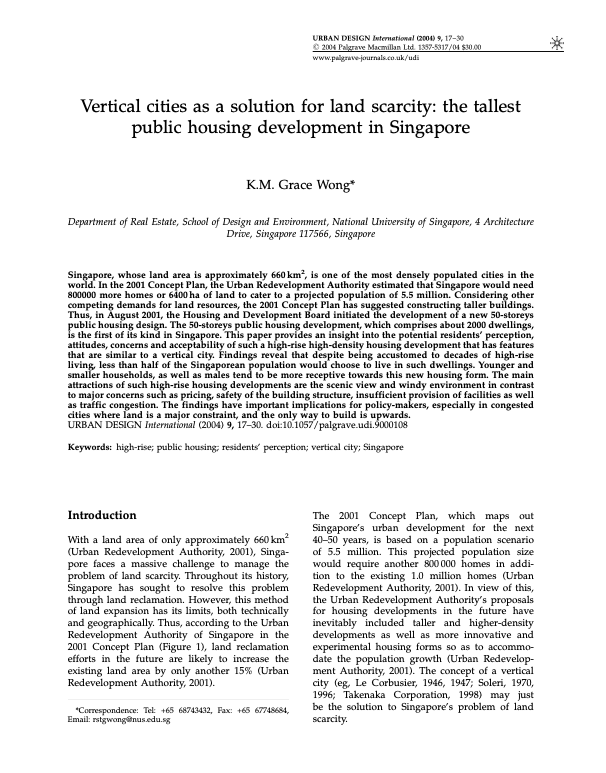Resource information
Singapore, whose land area is approximately 660km2, is one of the most densely populated cities in the world. In the 2001 Concept Plan, the Urban Redevelopment Authority estimated that Singapore would need 800000 more homes or 6400 ha of land to cater to a projected population of 5.5 million. Considering other competing demands for land resources, the 2001 Concept Plan has suggested constructing taller buildings. Thus, in August 2001, the Housing and Development Board initiated the development of a new 50-storeys public housing design. The 50-storeys public housing development, which comprises about 2000 dwellings, is the first of its kind in Singapore. This paper provides an insight into the potential residents’ perception, attitudes, concerns and acceptability of such a high-rise high-density housing development that has features that are similar to a vertical city. Findings reveal that despite being accustomed to decades of high-rise living, less than half of the Singaporean population would choose to live in such dwellings. Younger and smaller households, as well as males tend to be more receptive towards this new housing form. The main attractions of such high-rise housing developments are the scenic view and windy environment in contrast to major concerns such as pricing, safety of the building structure, insufficient provision of facilities as well as traffic congestion. The findings have important implications for policy-makers, especially in congested cities where land is a major constraint, and the only way to build is upwards.
Keywords: high-rise; public housing; residents’ perception; vertical city; Singapore

